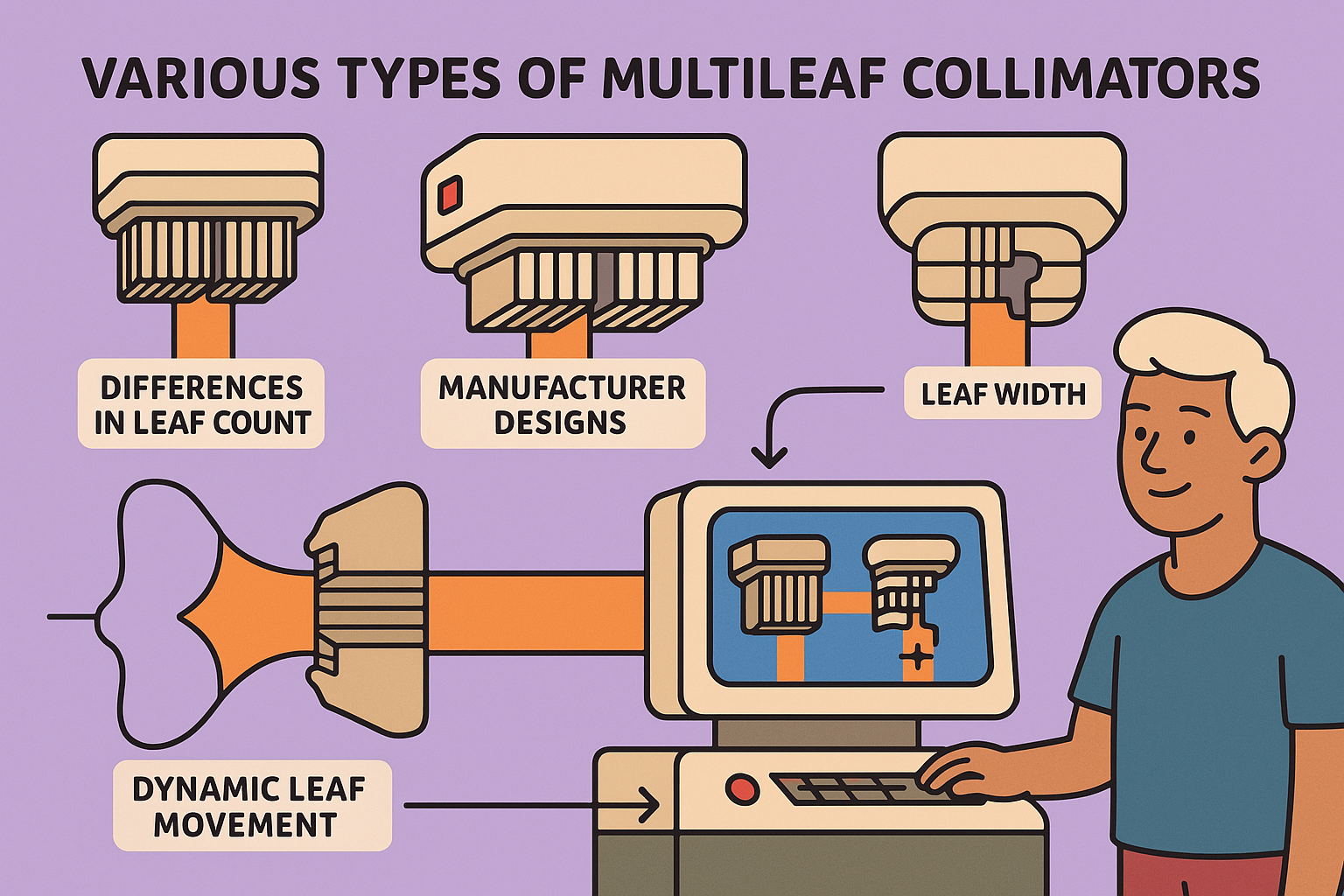Radiotherapy plays a crucial role in cancer treatment, delivering precise radiation to tumor cells while minimizing harm to surrounding healthy tissues. A cornerstone technology enabling this precision is the Multileaf Collimator, or MLC. These devices are integral to modern radiotherapy, especially when integrated with linear accelerators, as they are responsible for shaping and modulating radiation beams. This capability is vital for advanced treatments such as Intensity-Modulated Radiation Therapy (IMRT) and Volumetric Modulated Arc Therapy (VMAT).
Understanding Multileaf Collimators
MLCs can be categorized based on several key characteristics that influence their performance and application in clinical settings.
1. Number of Leaves
The number of leaves an MLC possesses directly impacts its ability to conform radiation beams to complex tumor shapes. MLCs can range from as few as 20 leaves to as many as 160 leaves. A higher number of leaves generally translates to greater flexibility and precision in shaping the radiation field, allowing for more intricate targeting of tumors.
2. Vendor-Specific Designs
Different manufacturers, such as Varian, Elekta, and Siemens, offer unique MLC designs. These variations can affect the MLC’s operational performance, compatibility with various treatment systems, and specific technical features. Each design aims to optimize certain aspects of beam shaping and delivery.
3. Leaf Width and Movement Capabilities
- Leaf Width: Finer leaf widths enable more precise beam shaping. This is particularly important for small or irregularly shaped tumors where even minor variations in the radiation field can significantly impact treatment efficacy and organ sparing.
- Dynamic Movement: Modern MLCs are capable of dynamic movement, meaning they can adjust their positions in real-time during a treatment session. This dynamic capability is essential for advanced techniques like IMRT and VMAT, which require continuous modulation of the radiation beam as the gantry rotates around the patient. Dynamic MLCs significantly enhance precision and allow for highly customized dose distributions.
Clinical Applications and Benefits
MLCs are widely employed in oncology to treat a diverse range of cancers, including those of the liver, lung, and breast. Their ability to create customized radiation fields makes them indispensable. For instance, in treating breast cancer, MLCs are crucial for shielding critical organs like the heart and lungs from unnecessary radiation exposure, thereby reducing the risk of treatment-related side effects.
Technological advancements have continuously improved the efficiency and accuracy of MLCs over the years. Modern MLCs have largely superseded older methods such as lead-based custom blocks, which were labor-intensive and less precise. Today, MLCs are an integral component of radiotherapy departments globally, offering cost-effective and time-saving solutions for both conformal radiotherapy and advanced treatment techniques.
While all MLCs serve the common function of shaping radiation beams, understanding the differences in their design, leaf configuration, and features is critical for oncology professionals. This knowledge helps in selecting appropriate equipment for specific treatment needs, ultimately contributing to optimal therapeutic outcomes for patients.
When you have specific questions about radiotherapy or treatment options, it is always essential to consult with a healthcare professional.
🔍 Discover Kaptan Data Solutions — your partner for medical-physics data science & QA!
We're a French startup dedicated to building innovative web applications for medical physics, and quality assurance (QA).
Our mission: provide hospitals, cancer centers and dosimetry labs with powerful, intuitive and compliant tools that streamline beam-data acquisition, analysis and reporting.
🌐 Explore all our medical-physics services and tech updates
💻 Test our ready-to-use QA dashboards online
Our expertise covers:
🔬 Patient-specific dosimetry and image QA (EPID, portal dosimetry)
📈 Statistical Process Control (SPC) & anomaly detection for beam data
🤖 Automated QA workflows with n8n + AI agents (predictive maintenance)
📑 DICOM-RT / HL7 compliant reporting and audit trails
Leveraging advanced Python analytics and n8n orchestration, we help physicists automate routine QA, detect drifts early and generate regulatory-ready PDFs in one click.
Ready to boost treatment quality and uptime? Let’s discuss your linac challenges and design a tailor-made solution!
Get in touch to discuss your specific requirements and discover how our tailor-made solutions can help you unlock the value of your data, make informed decisions, and boost operational performance!

Comments